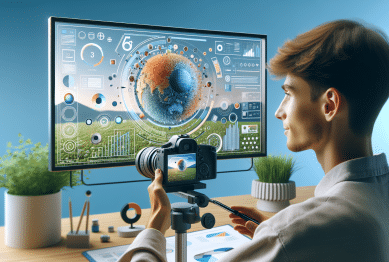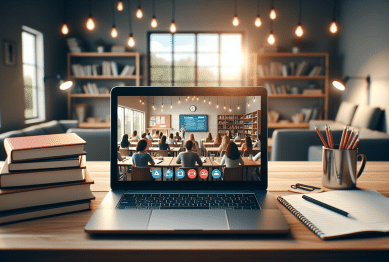Digital literacy skills have become essential in today’s interconnected classrooms and workplaces. This guide explores how mastering online research, evaluating sources, and using technology impacts learning, job prospects, and lifelong participation in society.
Understanding Digital Literacy in Modern Education
Digital literacy means more than just knowing how to use computers or smartphones. It involves the ability to find, evaluate, and use digital information thoughtfully. In schools, students who develop digital literacy skills can recognize credible sources, navigate research databases, and participate in collaborative projects with classmates worldwide. These capabilities also encourage curiosity and self-reliance—qualities prized by educators everywhere. The importance of these skills has intensified as assignments and exams increasingly move online and digital content becomes the primary learning resource in many classrooms.
The digital era has transformed the tools that support learning. Tablets, educational apps, and web-based resources are now part of the daily routine for many students. However, without proper digital literacy, such tools become stumbling blocks instead of stepping stones. Mastering basic digital skills allows learners to organize files, use productivity software, communicate via email, and participate in virtual discussions. These foundational activities give learners the confidence to engage with more advanced technology and make full use of educational opportunities.
Understanding digital literacy also prepares students to handle the pitfalls of online life. Issues like misinformation, cyberbullying, and privacy concerns challenge those who lack adequate training. Schools are integrating digital citizenship into their lessons, ensuring students can protect themselves and their data. This new emphasis in education highlights not only technical skills but ethical and responsible use, all of which are essential for confident, informed participation in society’s digital future.
The Role of Critical Evaluation in Online Research
A key aspect of digital literacy is learning how to critically evaluate online information. Not every website or source offers trustworthy content. Students must identify markers of bias, outdated data, and unreliable sources. Schools often teach frameworks for judging credibility, such as checking the author’s background, looking for peer-reviewed references, and comparing information across multiple reputable sites. This discernment is crucial for ethical academic work as well as for general internet use.
Critical evaluation extends to recognizing persuasive tactics. Advertisements and social media posts often blur the line between fact and opinion. Digital literacy curricula show students how to spot misleading headlines or manipulated images. When learners use a search engine, they’re encouraged to question the motives behind what surfaces on page one. Over time, these habits help them build a mental toolkit for smarter, more responsible digital consumption.
In higher education settings, critical evaluation skills become even more critical. University research relies on original sources, proper citations, and critical thinking. Graduates who excel at distinguishing between factual reporting and personal narrative are far better equipped to excel in their fields. These skills also transfer beyond the classroom, giving future professionals an edge in jobs requiring careful analysis of digital trends, policies, or technical documentation.
Digital Tools That Boost Classroom Learning
The rise of digital tools has revolutionized classroom experiences. Interactive whiteboards, online assessments, and collaborative docs create new possibilities for engagement and creativity. When students use word processors for essays, data analysis software for science projects, or video editing tools for presentations, they develop practical digital literacy skills that extend across subjects. Educators highlight these projects to foster familiarity with real-world software and spark curiosity about how technology improves both learning and communication.
Collaboration tools like cloud-based drives and shared workspaces make group projects easier to manage. Students facing homework deadlines can access files at any time, participate in virtual brainstorming, or peer-edit documents without meeting in person. This technology foundation also prepares learners for remote work and online degree programs, which demand the ability to collaborate across distances. Schools embracing these platforms report higher engagement and better preparation for most students’ future careers.
Adaptive learning platforms, which personalize lessons based on a student’s strengths and weaknesses, are another leap forward. These platforms use data analytics to adjust pacing and suggest extra practice as needed. As a result, digital literacy now includes both the technical know-how to use these resources and the self-regulation to use them effectively. Teachers find that embracing a variety of digital tools helps reach students with diverse learning preferences and needs, maximizing the impact of educational technology.
Bridging the Digital Divide in Communities
One of the major educational challenges is ensuring equal access to digital technology for all students. High-speed internet and devices are not universal, creating a digital divide along socioeconomic lines. Programs designed to provide affordable devices, community internet hotspots, or technology grants make a tangible difference. Schools and nonprofits organize training sessions for parents and students to build digital skills, ensuring all children can participate fully in both academic and social aspects of digital life.
Digital inclusion also supports job readiness in underserved areas. Expanded access to technology and training has helped level the playing field for those seeking new or higher-paying positions. Public libraries and community centers now offer Wi-Fi, computer labs, and digital literacy classes, aiming to bridge this gap. Participants gain confidence using email, job search platforms, and basic office tools—capabilities often required in even entry-level roles.
Policy makers continue to search for ways to reduce digital inequity. Government-backed broadband initiatives, public-private partnerships, and support from organizations such as the National Digital Inclusion Alliance have pushed for more accessible technology. Shifting the focus from just internet connectivity to comprehensive digital literacy training ensures more lasting impact, motivating lifelong learning and full participation in digital society for every community member, regardless of background or resources.
Digital Literacy and Future Job Market Readiness
Employers increasingly seek candidates with strong digital literacy abilities. From customer service to engineering, fields demand familiarity with software tools, data management, and secure online communication. Students who master these skills build a resume that stands out in a competitive global job market. Even roles not considered tech-driven now require comfort with digital forms, cloud-based communication, or scheduling tools—skills rooted in early digital literacy instruction.
Learning to manage digital identities, handle workplace cyber risks, and participate in virtual meetings are new essentials. Digital literacy programs designed for secondary schools or career centers often include modules on these critical areas. Career-focused platforms, such as LinkedIn Learning, offer micro-credentials that supplement traditional education with practical digital skills. Early exposure to such environments prepares learners to adapt to rapid shifts in workplace technology as digital transformation accelerates.
There is a growing link between digital literacy and workforce inclusion. As industries like healthcare, finance, and logistics digitize, they look for employees who can handle secure data practices and online collaboration. Digital skills are now foundational for upward mobility—individuals from all educational backgrounds can take advantage of emerging training options to expand their professional prospects. For students, the road to a successful career increasingly begins with robust digital preparation, making these skills more important than ever.
Fostering Lifelong Learning in a Digital Society
Education no longer ends at graduation. Digital literacy empowers lifelong learners to keep up with new technologies and access evolving streams of information. Online courses, webinars, and professional communities are now accessible to almost anyone with internet access. Those comfortable with digital tools can more easily retrain, explore new fields, or stay informed about societal changes. This openness encourages curiosity and reminds everyone that education is a continuous journey, adaptable to changing circumstances and opportunities.
Staying digitally literate supports civic participation and social engagement. Voters who understand how to verify information online can better assess campaign messages, publicize causes, and engage with community discussions. Libraries and universities have created guides for evaluating news, identifying disinformation, and engaging safely on social platforms. These resources help people of all ages maintain a healthy skepticism and stay active in policy dialogue, supporting democracy and social inclusion.
Finally, digital literacy is a cornerstone for adapting to emerging challenges, whether they relate to new privacy laws, digital health tools, or virtual communications. As technology continues to evolve, so too will the skills required to thrive. Lifelong digital education enables people to remain agile, participate fully in modern society, and cultivate resilience amid constant change. The future, in many ways, belongs to those willing to keep learning and adapting.
References
1. Partnership for 21st Century Skills. (2023). Framework for 21st Century Learning. Retrieved from https://www.battelleforkids.org/networks/p21/frameworks-resources
2. U.S. Department of Education. (2022). Advancing Digital Equity. Retrieved from https://tech.ed.gov/digital-equity/
3. International Society for Technology in Education. (2022). Digital Citizenship Standards. Retrieved from https://www.iste.org/standards/iste-standards-for-students
4. National Digital Inclusion Alliance. (2023). Digital Inclusion Programs. Retrieved from https://www.digitalinclusion.org/
5. UNESCO. (2023). Digital Literacy in Education. Retrieved from https://en.unesco.org/themes/ict-education/digital-literacy
6. Pew Research Center. (2021). Digital Divide Persists. Retrieved from https://www.pewresearch.org/internet/2021/06/22/digital-divide-persists-even-as-americans-with-lower-incomes-make-gains-in-tech-adoption/









